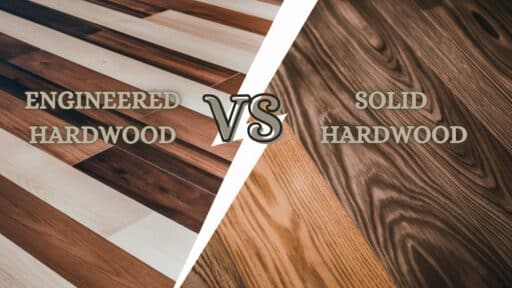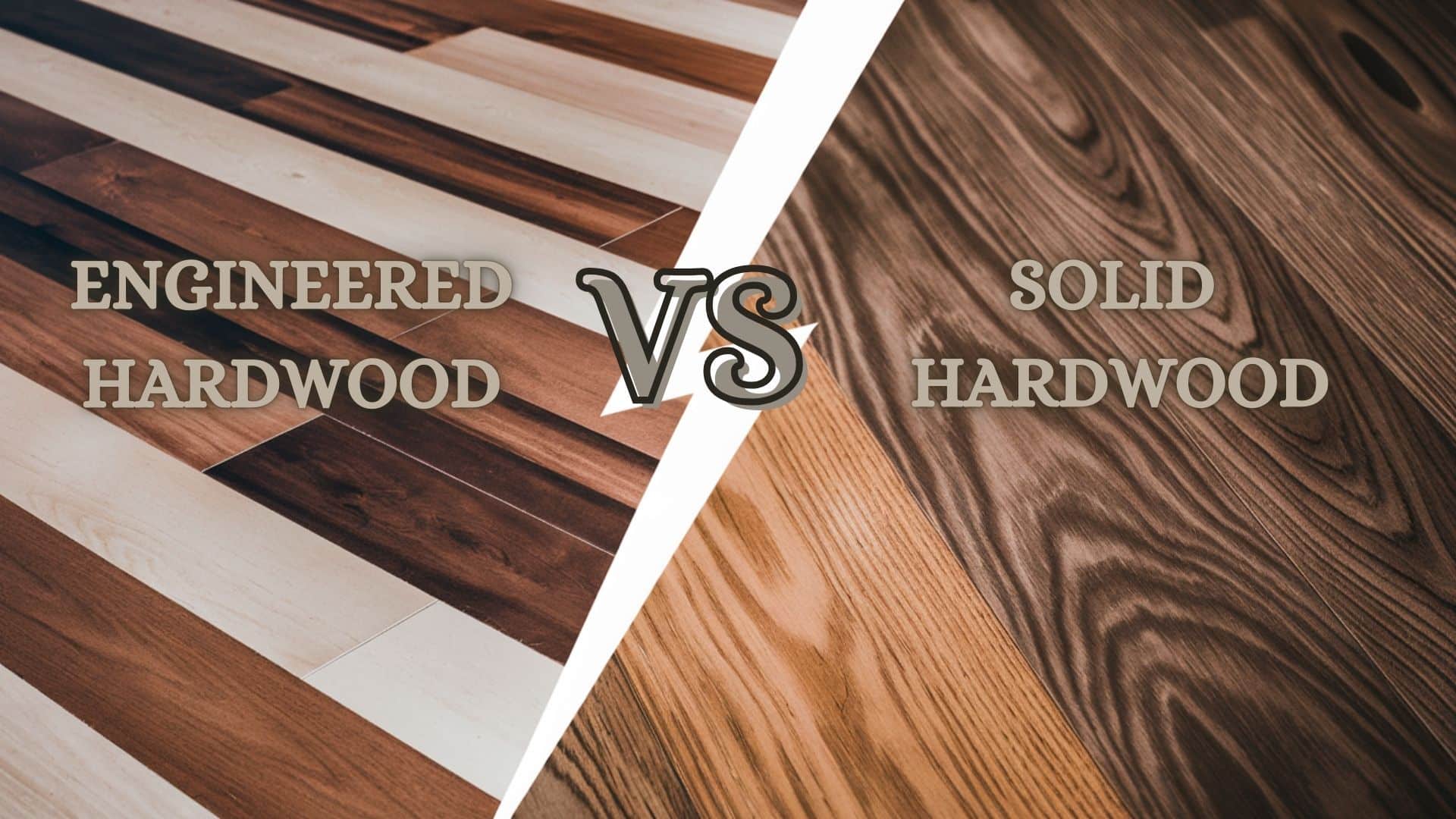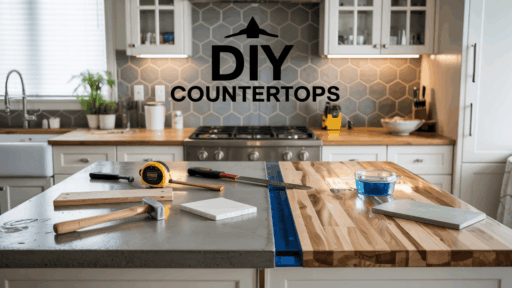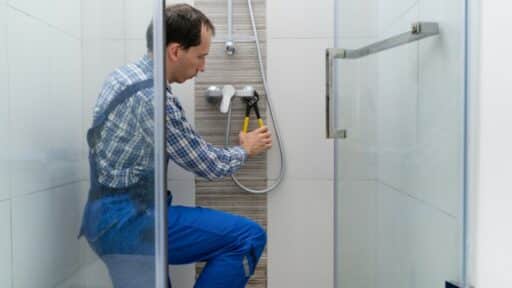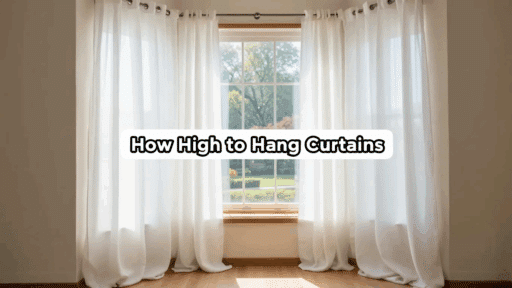Wondering about engineered hardwood vs hardwood flooring for your home? You’re not alone! These popular wood floors might look similar, but they’re actually quite different.
Engineered hardwood has a real wood top layer glued to several layers underneath, while solid hardwood is made from one piece of real wood all the way through.
Which one is better for your home? It depends on what you need! Understanding the key differences in how they look, how much they cost, how long they last, and where they work best can help you decide.
Both options bring natural beauty to your floors, but one might be a perfect match for your situation. Let’s explore what makes each type special and which might be right for you!
What is Engineered Hardwood?
Engineered hardwood is a smart alternative to solid hardwood floors. It’s made of multiple layers – a thin real wood top layer glued to several plywood or fiberboard layers underneath.
This layered design makes it stronger and less likely to warp from humidity changes. Common materials for the top layer include oak, maple, hickory, and walnut, while the core layers are typically made from pine, fir, or high-density fiberboard.
Engineered hardwood has the beautiful look of real wood but with added stability and is often cheaper than solid hardwood.
What is Solid Hardwood?
Solid hardwood flooring is exactly what it sounds like – planks made from a single piece of real wood, cut from trees like oak, maple, cherry, or walnut.
Each board is milled from one solid chunk of timber, giving you the real deal from top to bottom. The most popular woods are oak (both red and white), maple (known for its light color), hickory (super tough), and walnut (darker and rich-looking).
People love solid hardwood because it’s the genuine article—pure wood that can be refinished many times and, when properly cared for, lasts for generations.
Key Differences Between Engineered Hardwood vs Solid Hardwood
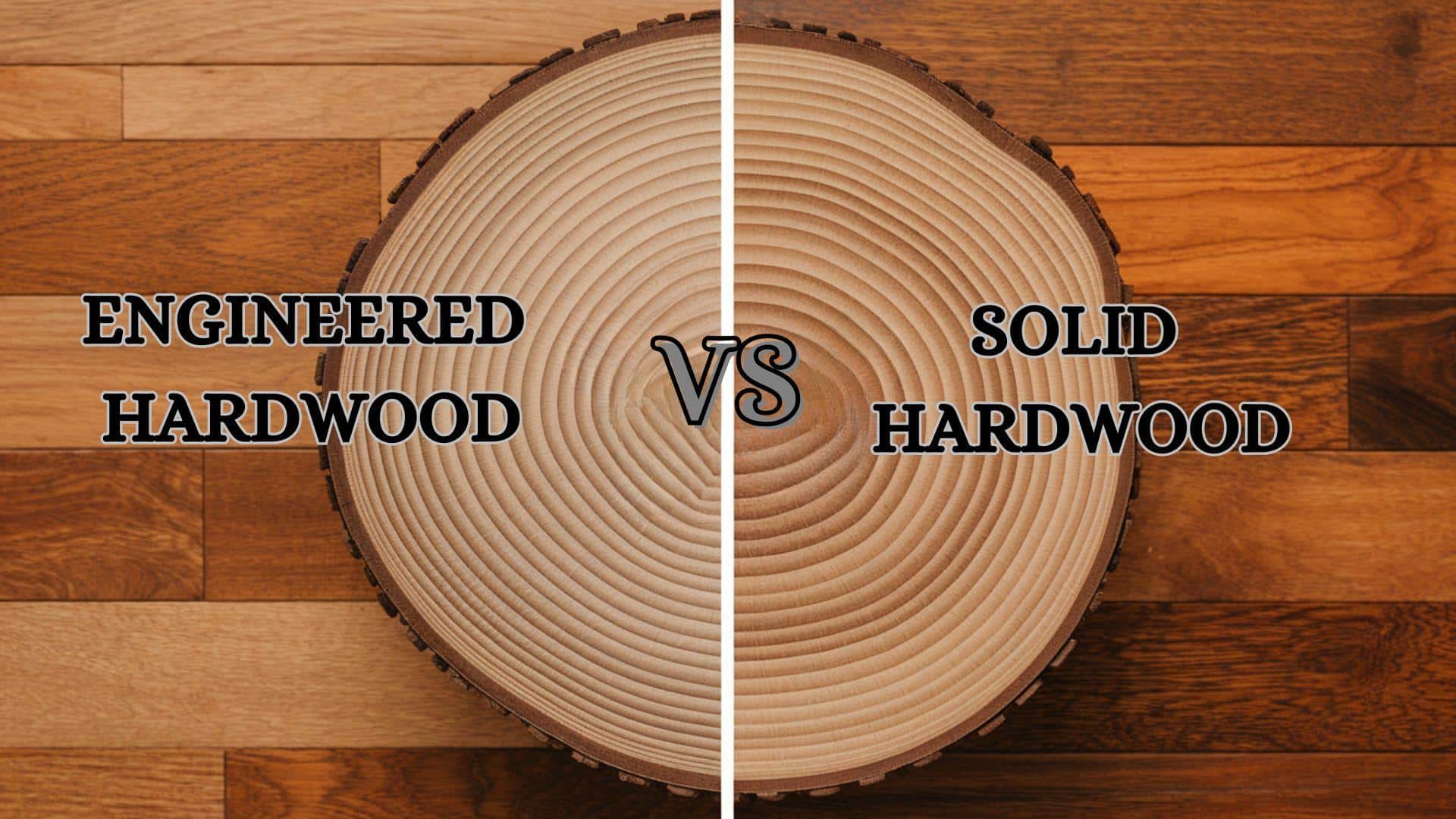
Understanding the fundamental differences between engineered and solid hardwood flooring is crucial for making the right investment for your home. Each option offers distinct advantages depending on your priorities, budget, and installation environment.
The following comparison highlights key factors to consider before making your decision:
| ASPECTS | ENGINEERED HARDWOOD | SOLOD HARDWOOD |
|---|---|---|
| Appearance | The veneer layer gives a sleek, uniform appearance | Natural variations in wood grain |
| Price Range | Affordable | Expensive |
| Durability and Lifespan | Lasts 20 to 30 years with proper care- May need replacement or refinishing after 20-30 years | Lasts 30 to 100 years- Can be refinished multiple times, long-lasting |
| Sound | Can sound hollow, especially with floating installation methods | More solid, quieter underfoot due to its dense structure |
| Water Resistance | More resistant to moisture and humidity, less prone to warping | Prone to warping and cupping in high moisture environments |
These two flooring options differ significantly in construction, which impacts their performance in various home environments.
Your choice should depend on installation location, budget constraints, desired maintenance level, and whether you prioritize long-term investment or practical functionality for specific spaces.
Installation: Which Is Easier?
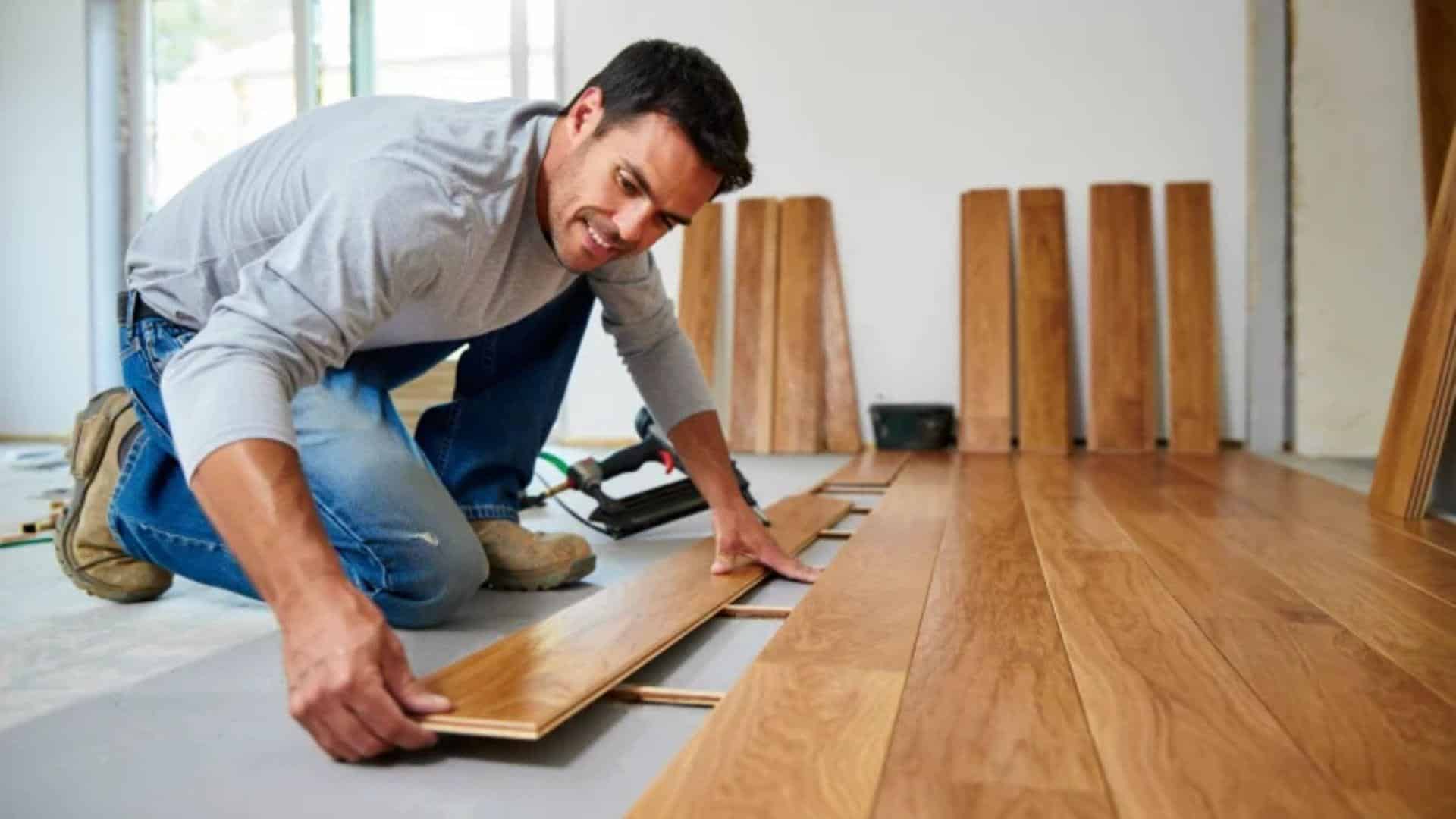
Installing flooring is a significant part of any project, and the complexity varies between engineered and solid hardwood.
Each option requires different preparation, tools, and techniques, which can impact the timeline and budget of homeowners and contractors alike.
Comparison of Installation Methods
Engineered Hardwood
- Features versatile installation options, including floating click-lock systems, glue-down, or traditional nail-down methods
- Can be installed directly over concrete subfloors, existing floors, or radiant heating systems
- Compatible with basement and below-grade installations due to its dimensional stability
Solid Hardwood
- Primarily installed using the nail-down method, requiring a plywood or wood subfloor.
- Cannot be installed below grade or directly on concrete slabs
- Requires an acclimation period of 3-7 days in the installation space to adjust to humidity levels
DIY Possibilities for Each Type
Engineered hardwood is significantly more DIY-friendly, with click-lock systems that require minimal specialized tools—just a saw, measuring tape, and tapping block.
Many homeowners successfully install solid hardwood over a weekend. However, solid hardwood demands more skill and specialized equipment, such as pneumatic floor nailers, proper subfloor preparation, and experience with expansion gaps, making it challenging for most DIYers.
Pros and Cons of Hardwood
Choosing hardwood flooring brings exceptional beauty and longevity to your home, though it requires considering the balance between premium quality and investment. Understanding both advantages and limitations will help you determine if hardwood is the right choice for your specific needs and lifestyle.
Engineered Hardwood
| PROS | CONS |
|---|---|
| More resistant to humidity and moisture, making it suitable for bathrooms, basements, and over concrete slabs | Limited refinishing potential (1-3 times) due to thin veneer layer |
| Typically less expensive than solid hardwood while maintaining a similar appearance | Shorter overall lifespan (20-40 years) compared to solid hardwood |
| Offers easier installation options, including DIY-friendly click-lock systems | Some lower-quality options may have thin veneers that can’t be refinished at all |
| More environmentally friendly as it uses less premium hardwood per plank | Can sound slightly hollow when walked on, especially with floating installations |
| Dimensionally stable with minimal expansion and contraction in changing conditions | May contain adhesives that potentially emit VOCs (volatile organic compounds) |
Solid Hardwoods
| PROS | CONS |
|---|---|
| Exceptional longevity with the potential to last 100+ years with proper care | Higher initial cost for materials and professional installation |
| Can be refinished multiple times (5-7 times) to restore appearance | Susceptible to water damage, warping, and cupping in humid environments |
| Provides better resale value and is highly regarded in real estate markets | Not suitable for below-grade installations like basements |
| It creates a warm, authentic sound underfoot that many homeowners prefer | Requires more careful maintenance and humidity control |
| Develops a rich patina and character over time that many find appealing | More limited installation options, typically requiring nail-down over wood subfloor |
Making the Right Choice for Your Home: Engineered vs. Solid Hardwood:
The “better” option between engineered and solid hardwood depends entirely on your specific situation.
Engineered hardwood offers superior moisture resistance, installation flexibility, and typically lower cost, while solid hardwood provides exceptional longevity, unlimited refinishing potential, and higher resale value.
Your installation location, budget, and long-term plans should guide your choice. Consider engineered for concrete subfloors, basements, or moisture-prone areas.
If you plan to stay long-term and want flooring that can be repeatedly refinished, opt for solid hardwood in the main living areas. When properly maintained, both options provide the warmth and beauty of real wood.
Environmental Impact
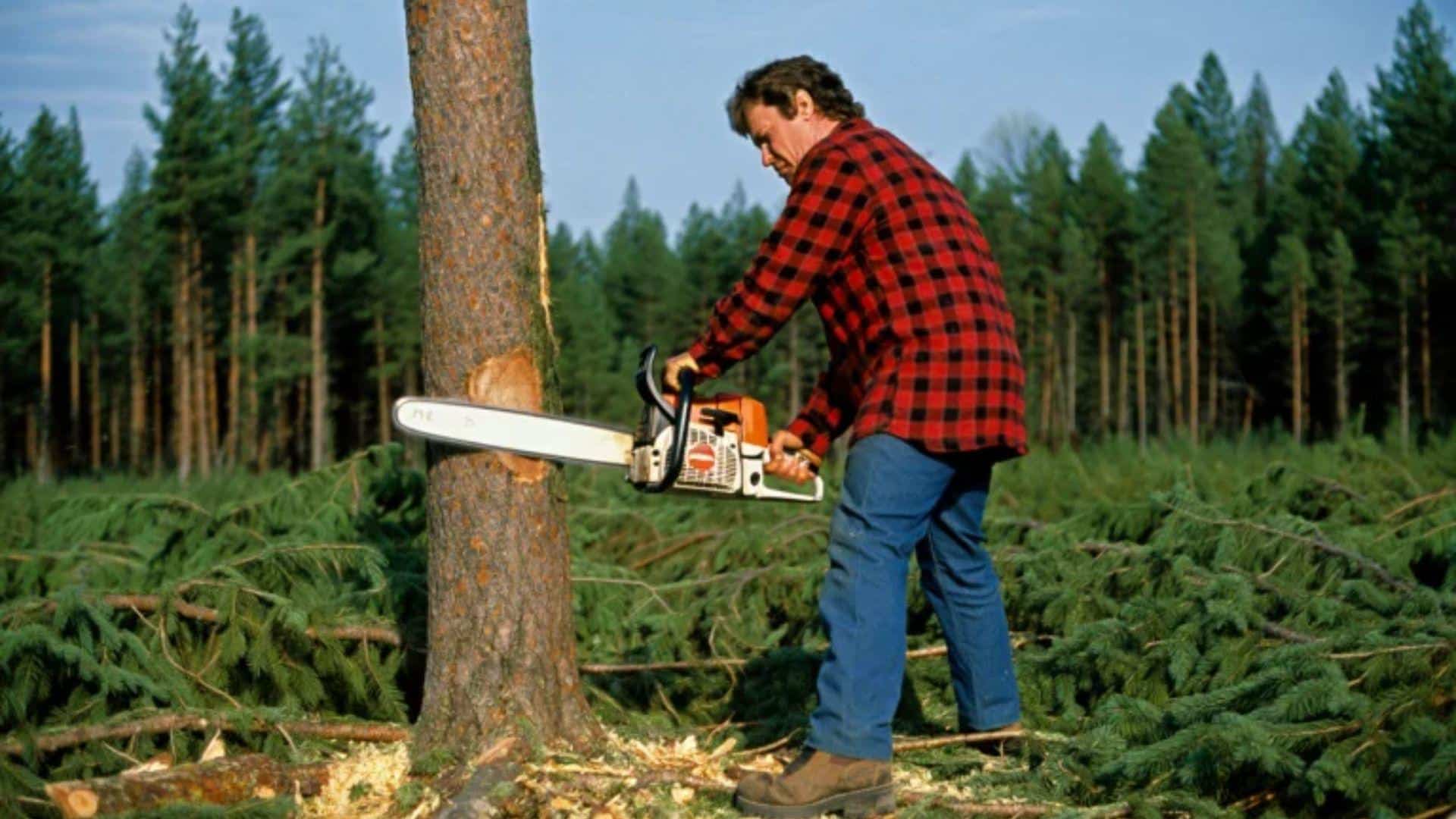
Choosing environmentally friendly flooring doesn’t have to be complicated. Here’s what you need to know about sustainable wood options:
- Engineered hardwood generally has a lower environmental footprint than solid hardwood. It uses 1/3 the hardwood per square foot by combining a thin veneer with sustainable plywood cores.
- Solid hardwood requires harvesting more trees but can last generations when properly maintained, potentially offsetting its higher initial resource consumption.
- For eco-conscious choices, look for FSC-certified products, domestic species to reduce transportation emissions, and finishes with low VOC content.
- Reclaimed or salvaged wood is the most sustainable option. It gives existing timber a new life while preserving forests and reducing demand for newly harvested materials.
When shopping for wood flooring, remember that the most earth-friendly choice depends on your specific needs and how long you plan to keep the floor.
Maintenance and Care
Keeping your wood floors looking beautiful is easier than you might think. Here are the key maintenance tips to help your flooring last:
- Both engineered and solid hardwood require regular sweeping or vacuuming to prevent scratches from dirt and debris.
- Use hardwood-specific cleaners and avoid excessive water, which can damage either flooring type.
- Place felt pads under furniture legs to prevent scratches and dents when moving items.
- Control indoor humidity levels (35-55%) to prevent warping, especially important for solid hardwood.
- Refinish solid hardwood every 7-10 years depending on wear; engineered hardwood can be refinished 1-3 times based on veneer thickness
With proper care, your wood floors will stay beautiful for years to come. Remember that prevention is always easier than repair, so small daily habits like removing shoes and wiping spills quickly will save you time and money in the long run.
Common Mistakes to Avoid
Common mistakes to avoid with wood flooring can save you headaches and money down the road. Here are the top errors homeowners make:
- Using excessive water when cleaning hardwood floors, which can seep into seams and cause warping, cupping, or discoloration over time
- Skipping the acclimation period before installation, leading to gaps, buckling, or separation as the wood adjusts to home humidity levels
- Ignoring manufacturer guidelines for installation methods, subfloor preparation, and expansion gaps specific to your flooring type
- Choosing the wrong hardwood type for your environment, such as installing solid hardwood in moisture-prone areas or below-grade locations
- Neglecting to use furniture pads and area rugs in high-traffic zones, resulting in premature wear, scratches, and dents in your flooring
Avoiding these mistakes will help ensure your wood floors remain beautiful and functional for many years.
Remember that a little extra care during installation and daily use can prevent costly repairs or even full replacement of your flooring.
Summing It Up
Now you know the big differences in the engineered hardwood vs. hardwood debate! Engineered hardwood is good for moisture resistance, easier installation and usually costs less.
It’s perfect for basements, bathrooms, or concrete floors. Solid hardwood lasts longer (up to 100 years!), can be refinished many times, and might increase your home’s value more.
Both options bring the natural beauty of real wood into your home—just in different ways. Think about where you’re putting it, how much you can spend, and how long you plan to stay in your home.
If you choose, proper care will keep your floors looking amazing for years to come. Ready to alter your space with gorgeous wood floors?
If you’re interested in more informational content on home improvement and renovation tips, feel free to click here and explore other articles that you might enjoy.

